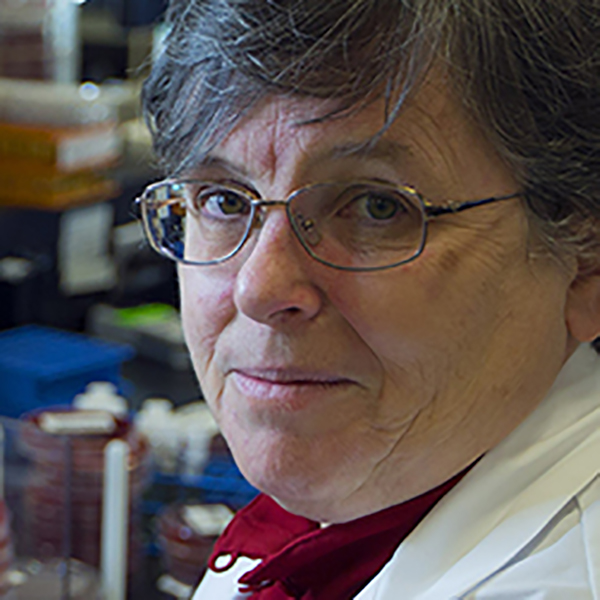
Donald Vinh, Scientist, Research Institute-McGill University Health Centre; Associate Professor, Department of Medicine, Faculty of Medicine and Health Sciences, McGill University; CITF-funded researcher
Generally speaking, what should we expect from COVID-19 heading into the fall?
In general, I avoid making predictions: there’s at least a 50% chance of being wrong. With the pandemic, that goes up to 150%, as we have learned over the last 2.5 years. It’s hard to know what will happen next week, much less three months from now.
Generally speaking, one of three things will happen: a disease can get better, it can stay the same, or it can get worse. The likelihood of things getting better tends to be proportional to the medical interventions applied. If no interventions are applied, you’re left hoping for spontaneous improvement. COVID-19 has shown that that won’t be its trajectory in the foreseeable future.
Superimpose on that static approach a dynamic evolution of the virus – with the certain development of new variants that have been “filtered” through previous immunity to have a survival advantage – and there is reason for heightened concern.
Add on top of that the congregation of people in closed spaces at all levels of schooling in the fall, in buildings with ventilation that is sub-optimal for COVID, and the picture could be quite grim.
The development of next-generation mRNA vaccines and subunit vaccinesA subunit vaccine is a vaccine that contains purified parts of the pathogen (in this case, SARS-CoV-2) that are antigenic or necessary to elicit a protective immune response. may dampen the impact, depending on their duration of protection and on the extent of public uptake. However, the alleviation they promise won’t be immediate. And, they alone won’t end the pandemic.
We know that immunity – whether infection-acquired, vaccine-induced, or hybrid in nature – wanes within several months. What schedule should I keep in order to maximize my immunity and ensure that I am up to date with my vaccinations?
The simple answer about what to do is: follow public health recommendations and make sure you stay up to date with vaccination.
At the moment, that means you should have had:
- four doses of a COVID-19 vaccine if you are over 60 years of age;
- three doses if you are between 18 and 59;
- two doses if you under 18; and
- five doses if you are severely immunocompromised.
Even if you are up-to-date, protection against milder infections wanes over several months, and protection against severe infection may start to wane – at least to some degree – after six to nine months. Thus, it is very likely that in the fall, public health experts will recommend that, at least, older adults, and perhaps everyone, should get another dose of vaccine.
This waning is also why experts are recommending that adults under 60 should consider a fourth dose now, if they have good reason to want to avoid infection or the risk of transmission of disease to others. Four doses (or five in the fall) may seem like a lot. It is certainly more that is usually needed to protect you from infectious diseases. However, we are living through a pandemic – these are not ordinary times, and the best solutions are not ordinary either.
Having said this, recommendations for the fall have not yet been made because the pandemic is still evolving. Public health officials won’t recommend added doses unless they are certain that they are needed. Antibody levels persist for longer after three or four doses than after two, and the combination of vaccine and infection (hybrid immunity, which is the situation for at least 40% of Canada’s population) is considerably more protective than infection or vaccine alone. Thus, additional doses may not be needed for everyone.
On the other hand, new variants may be coming which more effectively evade the immune system, making added doses necessary. Most people would like the added doses to include spike proteins from new variants, but to date vaccines containing Omicron-specific antibodies actually don’t look much better than the original vaccines. As with so much about the pandemic, the virus and our understanding of immunity continues to evolve, and we need to wait to be sure what the best course of action will be in the fall.

Dr. Allison McGeer, Clinician-Scientist, Lunenfeld-Tanenbaum Research Institute, Mount Sinai Hospital; Professor, Dalla Lana School of Public Health, University of Toronto; CITF-funded researcher

Dr. Scott Halperin, Director, Canadian Center for Vaccinology, Halifax; Professor of Pediatrics and Microbiology and Immunology, Dalhousie University; Head of Pediatric Infectious Diseases, IWK Health Centre, Halifax; CITF Vaccine Surveillance Working Party Co-Lead
Should we be confident in the safety of new vaccines?
The regulatory process for vaccine approval and the process for recommending whether and how new vaccines should be used in Canada are amongst the most rigorous in the world. Health Canada reviews all available data on the safety and efficacy of vaccines and ensures that sufficient data have been collected in an appropriate manner before determining whether or not a vaccine should be authorized for use in Canada.
Once a vaccine is available, the National Advisory Committee on Immunization (NACI) reviews the data and, using an evidence-based process, recommends how the vaccine should be employed. Each province/territory then reviews these recommendations and makes the final decision whether a vaccine will become part of the publicly funded program in their jurisdiction. While these processes were expedited and made more efficient during the COVID-19 pandemic, no short-cuts were taken and the currently approved vaccines underwent scrutiny equal to any vaccine previously approved in Canada.
Indeed, because these were new vaccines that received emergency authorization before full authorization was provided, active surveillance systems were put in place by federal and provincial health authorities that were far more comprehensive than ever before.
All vaccines and medications have some adverse effects, most of which are mild and rarely severe. The COVID-19 vaccines have proven to be very safe and the nature and frequency of their adverse events have been well described. Because of all of these processes and systems in place, Canadians can be very confident in the safety of new vaccines.
Thus far, the available vaccines have been unchanged since first being introduced. What can we expect from next generation vaccines? Will they be variant-specific? Are intranasal vaccines on the way?
The next-generation vaccines likely include ones that are variant-adapted and multivalent (able to protect against several variants at once). Needle-free vaccines that are delivered orally or by nasal spray are also on the way.
Omicron-adapted vaccines are being developed and tested by Pfizer and Moderna and are likely to be ready this fall. Preliminary results, released in June 2022, showed high levels of neutralizing antibodies against the BA.1 Omicron variant, but the vaccines were less effective against the more recent BA.4 and BA.5 strains. In late June, the U.S. Food and Drug Administration (FDA) recommended that the vaccine manufacturers add BA.4 and BA.5 spike protein components to their current vaccine composition to create a two-component booster. It is not clear when that will be ready.
Needle-free delivery options, via nasal spray or oral ingestion, are being developed and tested by more than a dozen companies. Most of these candidate vaccines are in early phase clinical trials. Once approved, they will be more attractive to those who are afraid of needles, which could be a significant cause of vaccine hesitancy. In addition, delivery of a COVID-19 vaccine via nasal spray or orally will enhance protection in the locations where the virus first infects: the nose and throat. This will reduce the amount of virus in these tissues among infected people, and help to reduce transmission, which could be a game changer for the control of the pandemic.

Dr. Jun Liu, Professor, Department of Molecular Genetics, University of Toronto; CITF-funded researcher

Dr. Catherine Hankins, Co-Chair, COVID-19 Immunity Task Force; Professor, School of Population and Global Health, Faculty of Medicine and Health Sciences, McGill University
Governments have rescinded public health mandates for masking, social distancing, capacity restrictions, etc., as well as the need for vaccine passports. When every protective measure is a matter of individual choice, what behaviours should I adopt to keep myself and my loved ones safe? Can we expect to have public health measures be put back into place?
To keep yourself and your loved ones safe, it is key to think smartly and use good old common sense. In crowded public places, such as entertainment venues, public transportation, bars and restaurants, or large meetings, wear a well-fitting mask. Some people carry straws (metal, bamboo, etc.) so that they can drink more easily while wearing a mask. Think smartly. It is best not to rely on taking your cue from others who are not wearing a mask. They may be less concerned than you about avoiding serious symptoms and long COVID, and perhaps less aware that they can transmit the virus easily to more vulnerable people. If you decide to take a risk without a mask, be respectful toward those who do wear one – they may be protecting you too.
Beyond masking, keep your COVID-19 vaccinations up to date. Vaccines continue to provide protection against serious illness, hospitalization, and death. Check recommendations from your own province and update your immunity when you become eligible for new doses. If you have had the first two doses but have not yet had your third, there is no better time than right now. If you have never had the vaccine, your chances of getting COVID are very high – Omicron is so transmissible. It is important to get the vaccine now. If you have had COVID, whether or not you had any symptoms, immunity will be stronger and longer lasting if you are vaccinated, as well. Each province has different age recommendations for fourth doses. If you are eligible and it has been six months since your last dose, get the vaccine now.
This pandemic is not over, and SARS-CoV-2 continues to mutate. Potential remains for the emergence of new variants of concern that are highly transmissible, and that evade immunity – but also that are more virulent. It is possible to imagine a situation in which some mandates might be re-introduced. Beyond hoping that this will not happen, we can all play a role in reducing the risk – mutations happen with transmission. The more transmission there is, the higher the likelihood of mutations. Anything you do to interrupt and prevent transmission can contribute to ending the pandemic sooner.
If my immune system is compromised or I am over the age of 60, would I be advised to take added precautions?
Some, but not all, people who are older or are on immunosuppressive medications are not protected by vaccination. This can be because their immune systems cannot mount a strong enough response or it can be because those responses decrease very quickly. The Omicron variants that are circulating now are particularly good at infecting people who have weaker responses to vaccination. Although the high rates of infection now make if feel like getting COVID-19 is inevitable, it is still important to try to prevent infections or reduce the number of infections we get. Emerging data say that each time we get infected there are potential risks to our long-term health and that having been infected once doesn’t always stop future infections. Vaccines are an important way to protect ourselves and our communities, but they aren’t the only tool we have. Here are the precautions that I recommend to all the vulnerable people in my life, and which I follow myself:
- It isn’t necessarily about how many vaccines you’ve had, but how recently you’ve been vaccinated. Two doses are not enough to protect against severe Omicron infections, so if you’ve only had two, get a third dose as soon as you can. Even in healthy young people protection against having a symptomatic Omicron infection has waned 3-5 months after the last dose. If you are able to get vaccinated at the start of a wave, you’ll be at your most protected right when you are most likely to get infected.
- Moderna is more protective in older adults and immunosuppressed people than Pfizer, but any vaccine is better than none.
- Using a well fitted mask indoors is a great way of protecting yourself and protecting your community. Masking outdoors in a crowd can help too.
- Ventilation is extremely important. Avoid unventilated spaces and socialize outdoors as much as possible.
- Don’t postpone medical treatment. A healthy body is best able to fight infections. The better you manage a chronic health issue (e.g., diabetes, respiratory conditions), the better you will do with any serious infection.
- Encourage friends and family to mask, socialize outdoors, and keep their vaccines up to date. We all need to do our part to keep vulnerable people safe. Do not socialize with people who have symptoms. Rapid tests are not always accurate so don’t assume that a negative test means your symptoms are not COVID-19.
- Let politicians, leaders and policy-makers know that this is an important issue for you. Encourage them to follow up on initiatives to increase air ventilation standards, provide masks, and increase testing.

Dr. Dawn Bowdish, Professor & University Scholar, Canada Research Chair in Aging & Immunity, McMaster University; Executive Director, Firestone Institute of Respiratory Health, St. Joseph’s Healthcare, Hamilton; CITF-funded researcher

Dr. Jesse Papenburg, Scientist, Research Institute – McGill University Health Centre; Assistant Professor, Department of Pediatrics, Faculty of Medicine and Health Sciences, McGill University; Department of Pediatrics, Division of Infectious Diseases, MUHC; CITF Scientific Advisor
Can you offer some advice regarding protecting my children from COVID-19 as they head back to school?
We expect another COVID-19 wave as the school year starts and people spend more time indoors. Thankfully, children are much less likely to experience severe disease than adults. Nevertheless, more children were hospitalized with COVID-19 last winter in Canada than during the entire preceding period of the pandemic. While chronic medical conditions increase the risk of severe COVID-19, it is difficult to predict which child might get very sick, as roughly half of all Canadian children hospitalized with COVID-19 had no known risk factors. Also, multisystem inflammatory syndrome in children (MIS-C) is a very rare, but serious and unpredictable, complication of SARS-CoV-2 infection. Finally, recent data suggest that ~5-10% of children with COVID-19 will have persistent symptoms 3 months after infection.
So, what can families do to minimize the risks of COVID-19? We know that socializing outdoors (or optimizing indoor ventilation), wearing a well-fitting mask when indoors, and frequent hand washing, reduce transmission of COVID-19 and other respiratory viruses. Also, while COVID-19 vaccines may not be as effective at preventing mild infections in the Omicron era, studies show vaccination still reduces the risk of hospitalization by 40-90% in children and adolescents.
Most recently, children as young as six months of age became eligible for vaccination. Vaccine safety continues to be very closely monitored, and surveillance of millions of primary series given to five- to 11-year-olds in the US showed that the vaccine was safe. Canadian families are therefore encouraged to avail themselves of this well-proven form of protection against COVID-19 by vaccinating eligible children and ensuring that all household members are adequately protected in accordance with Canada’s fall COVID-19 booster campaign.

